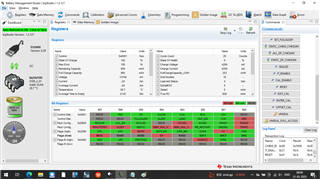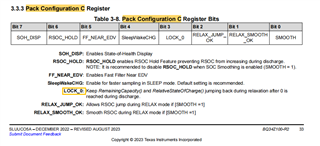Other Parts Discussed in Thread: BQSTUDIO, BQ34Z100, GPCCHEM
Tool/software:
Hi,
We are using the BQ34Z100-R2 for one of our power bank and BMS project.
We have initiated the learning cycle for our Lithium-Ion cell and would like to clarify a few observations encountered during the process.
-
Chem ID Selection:
The Chem ID for our cell is available in the beta version of BQStudio, so we selected it and proceeded with the learning cycle. Kindly confirm if this is acceptable. -
Discharge Cycle Observation:
We completed the first discharge cycle successfully and kept the setup in relax mode for approximately 14 hours overnight. As per TI document “4863 - How to Complete a Successful Learning Cycle for the BQ34Z100”, the required status bits were set appropriately. However, we noticed that:-
The FC (Full Charge) bit was set, and the battery status showed 100%, which seems unusual.
-
During the discharge cycle, the SoC jumped from 100% at 20.5V directly to 0% at 19.5V, and remained at 0% throughout the rest of the discharge down to 15.5V.
-
During the relax period, the SoC jumped back to 100% (at around 14.7V) after approximately 1 hour.
Please advise if this behavior is expected or if it indicates a configuration issue.
-
-
Charging Cycle Behavior:
As per the procedure, we started the charging cycle. The VOK bit was set correctly after connecting the charger. However, we are concerned about the premature setting of the FC bit. Kindly suggest if any adjustments are needed here. -
Capacity Values:
We also observed that the Remaining Capacity and Full Charge Capacity values appear to be too low and not in line with our battery's specifications (refer to the attached image). Your guidance on this would be appreciated.For your reference i have attached the logs and the exported registers value with this mail. Please find the attchment.



